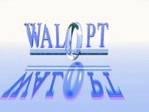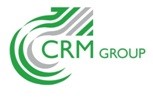-
StatusCompleted
-
Status date2019-12-03
-
Activity Code4F.072
The output of a solar array is dependant on the intensity of incident light, the efficiency of the cells and their quantity. Since solar cells constitute a major proportion of the overall cost of a solar array, there exists the possibility to decrease the quantity of cells while offsetting any resulting power reduction by increasing the intensity of incident light. In this way, savings in cost and launch weight could be made.
This idea is not new. Indeed, many studies have been conducted in the past, in which high levels of concentration of incident light have been proposed, based on optical lenses. However, difficulties in alignment and thermal design arose, resulting in their demise. Instead, low concentration schemes emerged, in which concentration was achieved by means of reflective surfaces, mounted either side of conventional solar panels. Problems associated with off-pointing, darkening and wrinkling of reflective surfaces arose, which again resulted in the demise of such concepts.
While paying particular attention to the pitfalls of the past, the objective of this activity was to assess whether a low concentrator solar array is still capable of significantly surpassing conventional arrays, in terms of cost and mass, based on thin III-V solar cell assembly, in combination with reflective surfaces.
After having considered these causes of failure and identifying the means by which they could be overcome, this activity was to culminate in a breadboard model and a preliminary array design.
The appropriate consideration of these causes of failure was made all the more challenging due to the limited literature available, in which many key details were missing, deliberately or otherwise.
While state of the art arrays are expected to out-perform conventional arrays, even with power enhancement with low concentration, nevertheless such a scheme could be used to enhance the output of an existing design, however with an impact at wing and system level and at a certain cost, which need to be weighed against the benefits in increased power. Based on a typical existing small scale solar array for GEO use, the concentrator scheme can provide a power enhancement from 46 W/kg to 55 W/kg, representing an increase of around 19 %.
The concentrator comprises two reflective foils of ultra-thin flexible glass, in rolls positioned on the two lateral sides of a conventional solar array panel. Deployment is achieved by means of a mechanism, which is released at the instant of panel hinge latching, allowing both foils to unroll and extend in a synchronised manner, forming a trough either side of the solar panel. The reflective foils are designed to remain at a higher temperature than the panel, to which they are connected, in order to avoid deposition of out-gassing products occurring in orbit.
At system level, the stowed concentrator results in a slight increase in the width and overall mass of the panel stack. As a consequence, some slight decreases can be expected in the fundamental frequencies in both stowed and deployed configuration. Since the device is entirely passive and initiated by panel hinge latching, there are no implications for either the mechanical or electrical spacecraft interfaces.
Attention has been given to the contamination of the reflectors, and in particular, to their operational temperature. Furthermore, an innovative deployment system, invented and patented by ESA, has been studied and incorporated in a breadboard, the performance of which has been measured by means of terrestrial exposure. With these findings, a preliminary array design has been made.

The project is now complete. Further development would be required to mature the concept for use on flight arrays.




